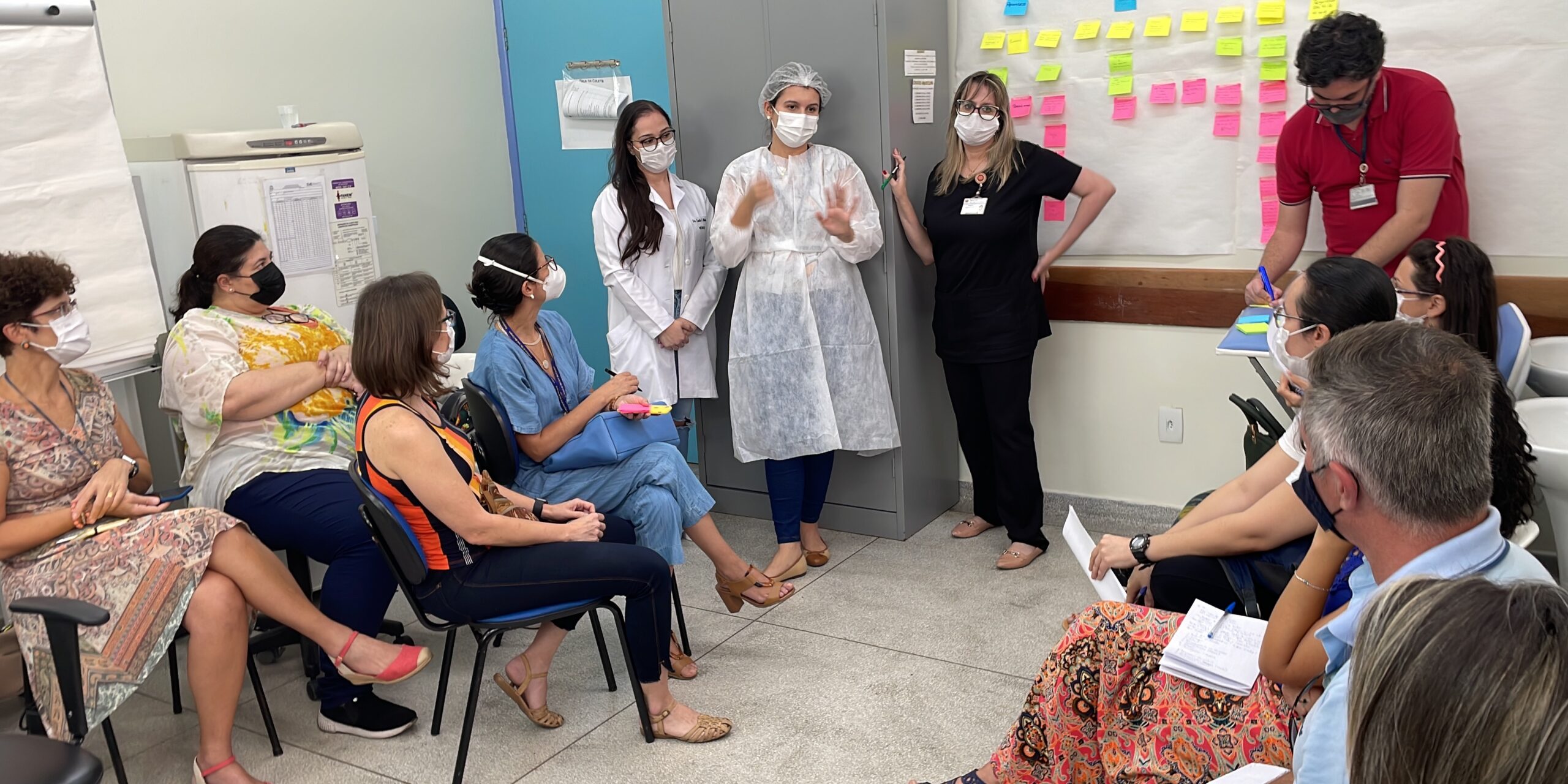
Managing the complexity of our oil & gas value streams
FEATURE – In this frank account, a senior executive discusses the challenges facing an oil and gas company as it tries to manage the complexity of its upstream and downstream supply chains.
Words: Béla Kelemen, Business Excellence VP, MOL Group - Hungary
The lean story of MOL Group is quite typical: when the global financial crisis hit in 2008, we started to feel a sense of urgency to change our ways. A number of cost-cutting measures and efficiency improvement programs got us out of the crisis, but we barely had time to catch a breath. In 2012, the downstream side of our business [MOL’s downstream supply chain starts when they get the barrels of crude, which they refine in four refineries and then ship to terminals by train or pipeline, and from there to the gas stations] was in dire straits here in Europe. At the time, 30% of refineries in the Old Continent were shut down.
We had to think of something, and that’s when the New Downstream Program was launched. Even though it consisted of old-school improvement projects, one of its elements was a “waste elimination” project that very soon led to a lean transformation program. Around that time, I visited Lufthansa Technik, which was five years into their lean journey, and was very impressed by what I saw.
It was clear to me we had to go for it ourselves. We called in an external consultancy. After a couple of consultations, we selected one of our refineries in Bratislava, Slovakia for our first experiment, in a unit that had a full range of activities (from maintenance to operations). That’s when our lean journey officially began.
Following a wave structure, we planned to diagnose, define the current state and then design the future state (that could be reached within three to five months) for different parts of the downstream business. Once we had a technical implementation plan, we trained people in how to bring improvement to their processes under the new system. Interestingly, we first concentrated on shopfloor operation and our top managers: the CEO of MOL Group started to visit the refinery once a month, and that was a great start.
The external experts helped us for three waves (less than a year), but in the meantime, we were developing the lean capabilities of our own people. At the time, I was the Supply Chain Manager responsible for all downstream optimization at group level and the sponsor of the lean transformation.
HOW WE CHANGED THE PROCESS
Our focus was two-dimensional: on one side, we wanted to improve our financial performance, but on the other we put a lot of emphasis on changing the culture of MOL Group. We called it a health improvement. With the idea of tackling waste in specific points of the process, the units started to come up with thousands of ideas (safety was a big focus, because of the nature of our industry). They were supported in this by our navigators – lean facilitators.
But we had only just started, and people were still reacting in a very traditional way – with resistance. It became clear to me there was so much work to do. One day, shortly after the consultants had left, I was following the navigators while they observed the work of maintenance operators: out of three hours of work we observed, I only saw 15 minutes of value-adding work. That was a shock for me. I was the executive responsible for the redesigning the maintenance work, and on paper it looked great, but there was actually a lot of waste. It was a big a-ha moment for me, more important than the one I had had at Lufthansa Technik (when I first saw the power of lean).
In the following months, we kept growing the scope of our lean transformation. We wanted to establish the Program Management Office, where the lean navigators would gather to support the divisions in applying the methodology. We hired external experts as well – most of them coming from manufacturing. This seemed like a good idea at first, because we wanted to bring in the knowledge, but in practice it was more of a failure than a step forward. The experts we hired understood lean, but not our business. It took them longer to learn about our work than it took us to learn about lean. This taught me that sometimes it’s easier to change the mindset of in-house staff and help them to understand the lean philosophy than to bring in highly-qualified external experts to teach us.
Our lean initiative expanded to other refineries (notably, one in Hungary) and to other business areas, like logistics and commercial. As we grew in our implementation, we had to get more people involved in our improvement work. At first, we succeeded in getting them on board, but they quickly got back to the old way of working. Sustaining results is by far the hardest thing to do, and we are hoping that engaging front-line leaders and middle managers more will help us to get there.
Despite some difficulties, the New Downstream Program resulted in a $550 million EBITDA, compared to the $300 million the downstream operations were able to deliver in 2011. We got many fantastic results: one of the units involved in our journey produces 99.8% pure propylene for the polymer unit. The required spec, however, was 99.6% and understanding and optimizing the process allowed us to gain that 0.2%. This might sound small problem to you (or a small over-processing of the first unit, which did not add anything to the polymer of the other unit), but it cost us an extra $300,000 in our energy bill.
After the good, tangible results we got downstream, in 2016 we moved to upstream and support functions. It was still lean thinking that we were relying on, but we had learned a lot over the course of the journey. In particular, we had learned the importance of adjusting our stance depending on the problem we face – what John Shook calls the “situational approach”. So, one of the first things we did was to draw the crude value stream, from well to refinery, helping upstream operations to understand that their customer was the refinery and not the Executive VP of Upstream. This is a concept they were struggling with.
THE COMPLEXITY OF OUR VALUE STREAM
As a vertically-integrated company, we produce our own oil – a small volume of 100,000 barrels a day – and we distribute it. We even have our own pipeline. You would think that controlling the entire value stream would make it easier for us to embrace lean across the company, but the truth is that siloes are siloes – whether they are inside the organization or outside.
We used to have value stream managers (product line managers, we called them, responsible for things like bitumen), but we quickly abandoned that idea. It just didn't work for us, at least not at the time. Subsequent attempts at breaking down the silos – including asking the downstream managers to draw the value stream for particular products – also failed. No doubt this is a sticky point for us.
Our business sees prices and volumes change constantly: this means optimization efforts are largely based on market forecasts and assumptions. Additionally, we have an incredibly high number of variables, which make our processes uncertain – for example, given that some of our volumes are delivered by barge, even the water level of the Danube can cause us disruption. Lean helps us to analyze and measure the situation in order to make things more predictable.
This complexity might be one of the reasons behind the low level of adoption of lean ideas in the oil & gas industry. When we started our lean journey, I reached out to many oil companies, only to find that none was really applying lean principles. They implement some elements of lean, but don’t see it as the system it is. The industry might be volatile, but if your activities are full of non-value adding work you are not exactly helping yourself. Removing that waste will make you more competitive. We are proof that lean in oil and gas can work: in 2012 we were in big trouble, while in 2017 we had a record performance.

NEVER FORGET THE GEMBA
When we started on our lean journey, we didn’t fully understand the importance of the gemba. Or maybe we thought that going to the gemba meant to follow the practices we already had in place, like site visits and safety audits. Or maybe there were just too many new things distracting us from it. Be it as it may, I now see we weren’t putting nearly enough emphasis on the gemba.
In the lean world, we are used to hearing how important the gemba is. But how many of us actually practice what they preach? I see at least two very practical reasons why the gemba should never be neglected. First of all, the higher position you have in management, the more disconnected you will be from reality. You can be good at reading reports, but reports are not reality – they paint the sky blue even when it is raining. Secondly, learning to see is the single most important skill we can develop in ourselves, and that can only truly happen at the gemba. It is not easy, as you have to put pressure on yourself to go and see. Always. People expect managers to know the solution right away and, when asked for their opinion, the operators will want to know what the manager thinks first. It’s the name of the game, but it has to change. Not jumping to solutions, not giving answers, not blaming people… all this is the result of years It took me years to get there.
I had the chance to write the foreword for the Hungarian translation of Michael Ballé’s Lead with Respect. I used an analogy in there that I like to share with people. In the past, I was like a soccer coach who listens to players, journalists and fans and reads all the newspapers but never watches the actual game. Now I am always on the side of the field, and I want to bring my colleagues in top management there with me, because it is only after grasping the situation and understanding the real problem that we learn to see and act differently.
This article is also available in Hungarian here.
THE AUTHOR

Read more


FEATURE – If we see lean thinking as a paradigm, which we do, then we should be able to define a set of values this paradigm is built on. So, are there lean ethics? Michael Ballé identifies 10 undisputed lean values, plus one.


FEATURE – Tackling climate change forces us to rethink everything we do as a society. Here’s three lean lessons that can show us a way forward.


FEATURE – Using data from a recent piece of research on logistics, the author discusses how Lean Thinking contributes to a more efficient and effective way of dealing with problems.


CASE STUDY – This primary care unit in Brazil is hoping to become a model for other units in their system. Take note, this is how Lean Thinking can spread across healthcare systems.

